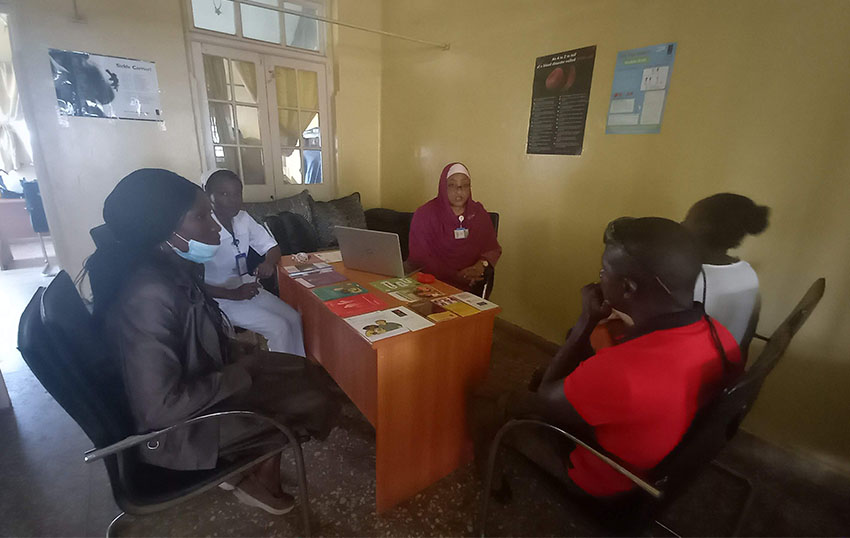Implementing a newborn screening programme: our experience in Kaduna State, Nigeria
Newborn screening programmes for sickle cell disorder ensure early diagnosis, allowing preventative measures to be established early in childhood and reducing the likelihood of major health complications. Here, Dr Ifeoma Ijei-Enesi, Dr Livingstone Dogara and Dr Psalm Baba Inusa describe how their screening programme has overcome challenges to improve diagnostic and treatment services for patients with sickle cell disorder.
Sub-Saharan Africa accounts for more than 80% of the over 400,000 sickle cell disorder (SCD) annual births globally, with Nigeria having the most cases. Despite the significant public health implications, no African country has implemented universal newborn screening (NBS) similar to national childhood immunisation programmes.1 NBS is essential for early diagnosis and the initiation of basic health intervention strategies and steps to prevent diseases like malaria, to reduce illness and death.2
Experts in Africa have identified a complexity of factors contributing to the challenges faced in initiating, operating and expanding NBS programmes. There is consensus that the government’s role in the design, implementation, funding and integration of NBS programmes for SCD into public health systems can influence the sustainability.
The north-western state of Kaduna has a population and density of 8 million and 183.1/km2, respectively (as at 2016).3 It is here that our young NBS programme exists at a sub-governmental level in a small network of rural and urban facilities offering tiered healthcare.
The African Research and Innovative Initiative for Sickle Cell Education (ARISE), an EU-funded project, is working with state, local and international partners to increase research, diagnostic and clinical management capacity throughout the healthcare system. The aim is to bridge the screening gap by screening 10,000 infants annually.
Amina’s story
Amina’s* parents drove 11.2 km across the Kaduna metropolis to our facility, a tertiary hospital in the heart of the city. They had been referred for specialist care for their son aged almost four. Amina, his three-month-old sister, was offered screening as she was an at-risk infant.
Amina underwent dried blood spot sampling, whereby a small volume of blood was collected from Amina onto a piece of absorbent paper called a Guthrie card. The blood dried on the paper before being packaged and sent to a screening laboratory in Kafanchan, a town about three hours away from the metropolis. The lab uses isoelectric focusing, which is a cost-effective technology that separates proteins, to identify abnormal types of haemoglobin associated with SCD.4,5
Unfortunately, in a country facing the challenges of incessant power outages, supply chain interruptions, difficult travel terrain and insecurity, the testing platform was experiencing equipment downtime. It was six months before Amina’s results were received on-site. The parents were contacted by phone within 24 hours of receipt, but they were unable to make a physical appointment until three weeks later due to paternal schedule conflicts.

Amina was now one year old. She had developed symptoms at four months and the results showed she had SCD like her older brother. Despite the delay in obtaining her results, the parents’ concerns were allayed by education about how her disorder could be managed and were both relieved and delighted to hear about our care plan for her going forward. She is currently enrolled at our facility receiving malaria and pneumococcal prophylaxis, folic acid, vaccinations and health checks.
We have reduced our turn-around-time and babies are now enrolled into clinical care within four to six weeks of the blood spot being taken.
We have since secured increased government commitment and American Society of Hematology-Consortium on Newborn Screening in Africa (ASH-CONSA) laboratory support for resources for tests and equipment. We have been able to provide service and training to primary healthcare centers to help improve the services provided and set standards. To further reduce delays and promptly identify and address challenges along the screening pathway, we established an additional NBS laboratory, implemented regular twice-monthly meetings and facilitated a review process. We have reduced our turn-around-time and babies are now enrolled into clinical care within four to six weeks of the blood spot being taken.
Amina’s story depicts the myriad of challenges faced in providing diagnostic and therapeutic treatments for people with SCD in low- and middle-income countries and some strategies to overcome such barriers. With her parents eager to partner with us to provide the best possible care for her, I know we haven’t seen the last of that little girl and I’m privileged to have been a small part of her story.
Acknowledgements to Monica Shuaibu and Janet Yakubu.
*The child’s name has been changed to maintain confidentiality.
